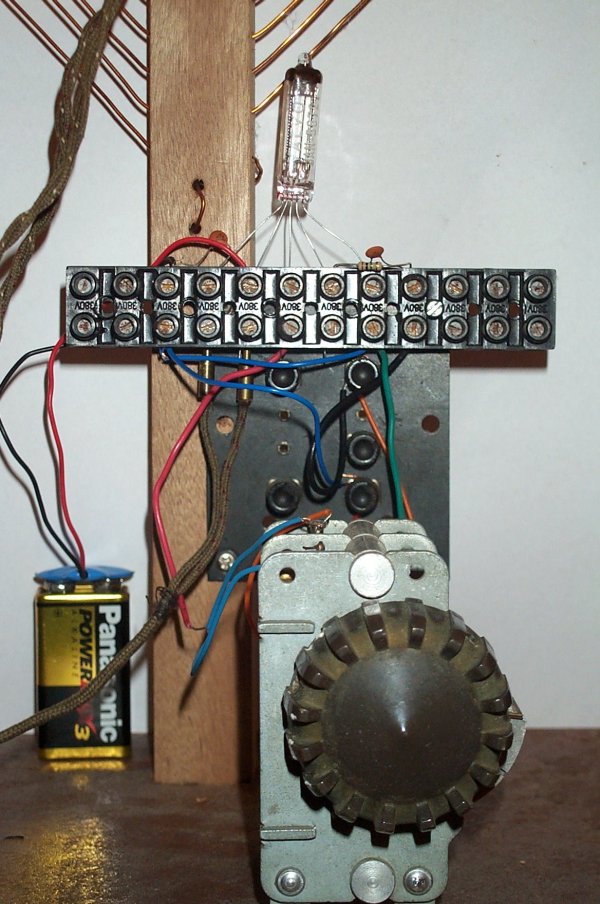Some radio receivers I recently built:
a) A Crystal receiver based on a kit by Chris
Dorna (PE1DZX), with a few added frills for better reception..
At night I get 8 stations with a small 4m antenna in the attic ( at 12m altitude, in
Naarden, Netherlands)
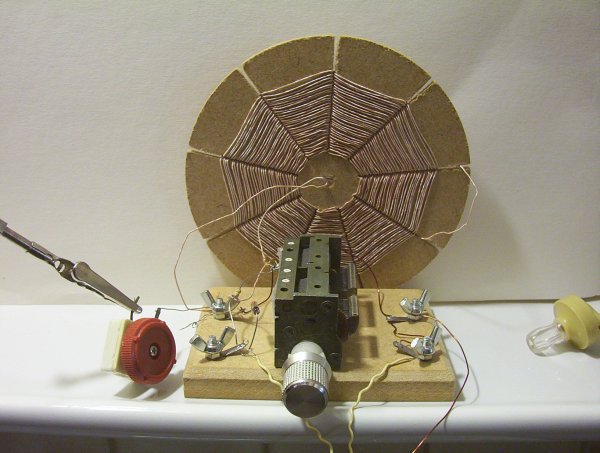
b) A ZN415E based receiver - a marvellous 12 transistors on a single chip, running on
1.2-1.5 volts.
One nice aspect of this chip is that it drives a standard 2x32Ohm headphone directly as
one 64 Ohm phone.
This means that it uses any cheap leftover walkman, discman, mp3player headphone or
earplug.
It gets some 20-30 stations at night without any external antenna, just using the
ferrite rod.
Note the plugs for the coil. I use this set to test the coils for my crystal radio's as
well.

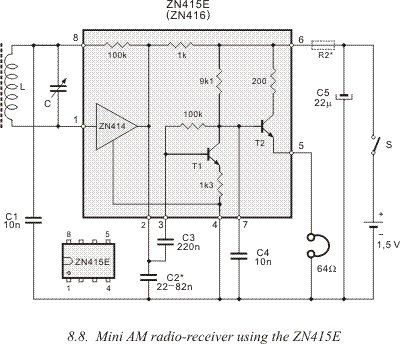
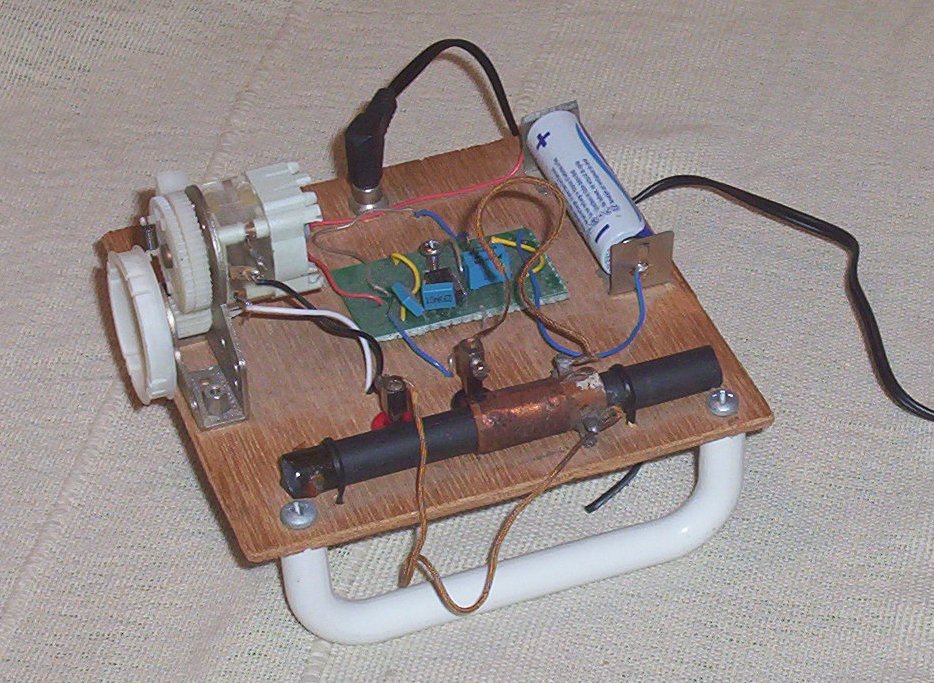
c) My model 'Peppermill' - A genuine old peppermill. In the middle is a - slightly
broken plastic (celluloid?) cylinder. 60 turns of 1mm copper wire, the variable
condensator
hidden in the round cupola on top, and the diode on the bottom. Tuning is with the
copper knob on the right. The antenna and ground connect to the back two round screws,
and the headphones to the front. Very unselective, but driven with a simple ferrite rod
antenna circuit it suddenly gives a lot of power to the horn speaker I use
together with an impedance transformer made from a cheap multi-voltage power supply.
Enough to fill the room with music, even in daytime, from two near stations at 747 and
1008MHz, 402m and 298m wavelength at 32Km, distance, 400 KW power.
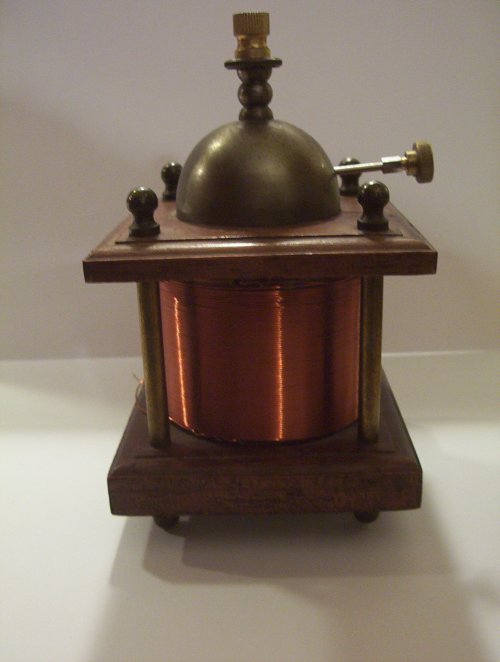
d) And finally, my current setup, using the above peppermill system as a detector
system driving two horn speakers:
- From left to right: Small 22cm horn speaker, a simple antenna system of a tuned
ferrite coil which drives the peppermill as a detector system in the middle. On the
back two halogen 220V->12V transformators, used as impedance transformers for the
two speakers. Far right a large 40cm horn speaker. Looks totally silly/impressive, but
fills the room with sound.
Again: No batteries needed, powered by the near stations. It is really surprising how
much sound this setup creates with just a 4m (13ft) indoor antenna. at 12m height in
the top floor!

And a few months before my 60th birthday, my first tube radio. A miniature battery tube
radio with a large loop antenna I built in 2010.
This is the real stuff: Single 55 year old tube, 70 year old headphone, plus some more
modern parts.
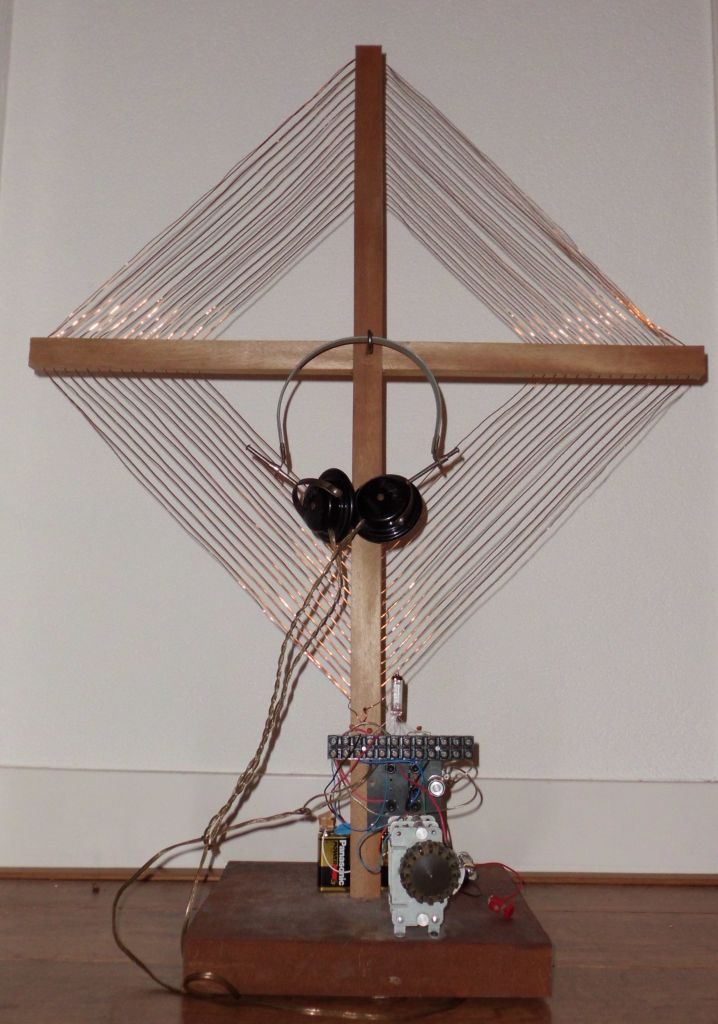
Technically: A single tube regenerative AM receiver. And at night I can hear 30 to 50
stations clearly.
Visually it needs some improving, but at least it works.
The tube is here:
